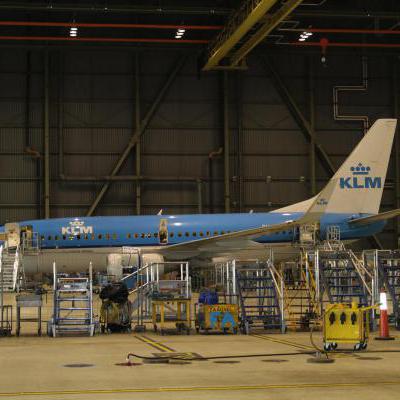Non-destructive investigator (Niet-destructief onderzoeker)
Information on this skill...
A non-destructive investigator is a researcher who is responsible for conducting research on the quality of materials. An important feature of non-destructive testing is that the materials and objects examined are not damaged by the examination. A commonly used abbreviation for non-destructive testing is also called NDT. Nowadays, there are various techniques and possibilities to perform non-destructive testing, such as press tests, hardness measurements, layer thickness measurements, ultrasonic examinations and X-ray examinations. In non-destructive testing, the objects are not damaged, but the researchers do get a good impression of the quality. What kind of objects or materials a non-destructive researcher will examine can vary per assignment, but the studies always have to do with safety inspections and quality inspections. Performing non-destructive testing is important in various industries, because tools, machines and vehicles must be inspected regularly for any defects that are not initially visible to the naked eye. In order to prevent accidents, such as due to metal fatigue, these types of objects must be examined by researchers, who have the right research resources. In general, a non-destructive investigator will also be responsible for preparing inspection reports, in which all measurements and any recommendations are included. In some cases, these inspection reports are also included in possible permit applications. Consider, for example, aircraft, which are only allowed to fly after a complete inspection. Another example is the investigation of pipelines, which are used to transport oil or gas. The profession of non-destructive researcher occurs in practice from MBO level to university level.
Non-destructive researcher is thus a general name for workers, engineers and researchers, who can be responsible for non-destructive testing in various ways. Non-destructive testing is used in various industries to guarantee quality. Think, for example, of metal objects, which are examined for possible defects that are not visible to the eye, such as hairline cracks in metal. These hairline cracks can pose a safety risk depending on the application. Welds are also examined in this way to see if the welds meet the quality requirements. Welds must meet strict quality requirements, as they are usually an important part of the construction. Faults in welds are usually examined by a magnetic examination and by X-ray examination. By means of magnetic research, it is possible to detect defects on the surface. By applying X-ray examination, errors can be found deeper in the workpiece. How extensive a non-destructive examination is depends on the application of the object and the final load on the object. Non-destructive researchers can use a variety of techniques to detect errors or weaknesses in objects.
WHAT DOES A NON-DESTRUCTIVE RESEARCHER DO?
As a non-destructive researcher, you are responsible for independently carrying out safety inspections and quality inspections by applying various techniques. Which technique a non-destructive researcher will apply depends entirely on the final load on the objects and on guidelines and standards. Not all studies are equally extensive, because the requirements can differ per object. In addition, a non-destructive investigator is responsible for reporting the research findings. As described earlier, various professionals can be regarded as non-destructive researchers. Think, for example, of machine builders, overhaul technicians, diesel mechanics, pipefitters, shipbuilders and aircraft maintenance technicians. These types of craftsmen can have to deal with non-destructive testing in various ways. Non-destructive testing also has its counterpart destructive testing. Destructive testing applies, for example, to automotive engineers or test engineers, who use vehicles for crash tests. In the case of destructive testing, the object in question is lost. Destructive testing is important in order to be able to meet legal requirements and the quality requirements of the manufacturer.
NON-DESTRUCTIVE RESEARCHER:
TRAINING FOR NON-DESTRUCTIVE RESEARCHER
Most non-destructive researchers are professionals or who specialize in non-destructive testing from their field. These professionals are made familiar internally with non-destructive testing or have, for example, received an extra course or training in NDT research. Furthermore, it is not possible to name a specific programme, because NDT research can be applied at various levels. NDT research is specialist work that cannot be carried out by just anyone. In addition, there are also plenty of external training institutes where you can follow a course. Accounting is also important as an entrepreneur.
COMPANIES WHERE A NON-DESTRUCTIVE RESEARCHER MAY BE EMPLOYED
Where exactly a non-destructive researcher works is not easy to indicate, because non-destructive research occurs at MBO level to university level. Think, for example, of manufacturers, metal factories, the automotive industry, the petrochemical industry, gas turbine companies, research institutes or inspection services from the government. In some cases, a mechanical engineer can also be regarded as a non-destructive researcher.
COMPETENCES NON-DESTRUCTIVE RESEARCHER
The most important competence of a non-destructive researcher is that you have technical insight. In addition, you must have the right research skills. The competences of a non-destructive researcher can differ per profession, because a metalworker cannot simply be regarded as an engineer or scientist. In general, we can say that a non-destructive researcher must have a sense of responsibility, because the work can be very important depending on the purpose and the standards. Communication is also an important competence in most cases. Generally important words are laws and regulations, precise, checking, analyzing, collaborating, planning, organizing and knowledge.
LABOUR MARKET PERSPECTIVE AND CAREER OPPORTUNITIES AS A NON-DESTRUCTIVE RESEARCHER
The labour market perspective of a non-destructive researcher depends entirely on the level of education of the researcher. As an engineer, getting work as a non-destructive researcher usually won't be a problem. At MBO level, a non-destructive researcher is usually a metal worker who may also perform other work. The career opportunities as a non-destructive researcher are also strongly dependent on the level of education and your own competencies.
TERMS OF EMPLOYMENT AND SALARY OF NON-DESTRUCTIVE RESEARCHER
There are no examples of working conditions as a non-destructive researcher, because you can work for different types of companies and governments at different levels. Also, for this profession it is not possible to give a salary indication, because the salary will be highly dependent on the level of education and responsibilities. See the more specific professions for a salary indication.
The content on this page has been automatically translated from the Dutch language. For this reason, texts and videos on this page may contain small errors.
Lesen Sie diese Informationen auf Zerstorungsfreier Forscher auf Deutsch.
Lea esta información sobre Investigador no destructivo en español.
Lees deze informatie over Niet-destructief onderzoeker in het Nederlands.
Mijnzzp.nl


